There have been many interesting people who have called Harvey home:
Craig Family
May 27th, 1837, the brig Cornelius of Sunderland left from the Port of Berwick-upon-Tweed and headed to Saint John, New Brunswick. The reason for this journey was because The Stanley Land Company had giving out ads in Scotland encouraging young men and their families to move to their land.
Among the many immigrant families were brothers, James and Henry Craig from Wooler, Northumberland, England (The Borders). Henry Craig and Isabelle (Kay) were a young married couple, while James, a single man of 23, was traveling with his wife-to-be Mary Hume.
Mary Hume was born in Fenton, Northumberland, very close to Wooler. Mary was traveling with her infant daughter, Jane and her sister Margaret Hume, who married John Carmichael.
When the brothers arrived on July 13th, 1837, they were told, along with 26 other families, that The Stanley Land Company had run out of money. They were essentially left stranded until they decided to speak to the Lieutenant Governor, Sir. John Harvey and asked to purchase land outside of Stanley. The Lieutenant Governor agreed that if the immigrants worked on the road to St. Andrews, they could draw lots upon it and in return the community would be named after Sir. John Harvey (Harvey Settlement).
When they drew lots for their farms, the single men had to be content with a farm on the second tier from the road from Saint Andrews to Fredericton. On the Land Grant map for the present Parish of Manners Sutton, James' farm is shown as Lot #11, West, 2nd tier, directly behind that of his younger brother, Henry and sister-in-law, Isabel Kay. Henry built a small house and barn in the field beyond the spring that was near the road. In 1875 he built a new home closer to the present highway. Today, the brothers’ farms are adjoining.
In 1841, James married his wife, Mary Hume. They lived their entire lives on the farm in Harvey and are buried in the Harvey Settlement Cemetery, Lot # 323.
Harvey Settlement has its own history from birth to incorporation, but none-the-less, I am proud to be a sixth-generation Craig, born out of the immigration of 1837 and 1842 to New Brunswick and to Harvey Settlement. Eastern Star stared in 1951.
INFORMATION BY DANN CRAIG
John McGeorge
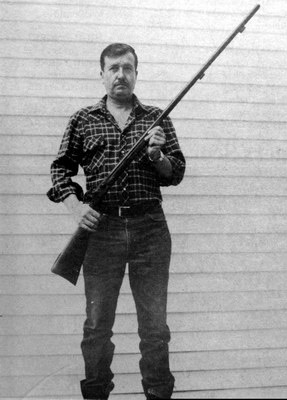
John McGeorge and his friend Ray were the first to settler in Lake George, Prince William. John and his family lived off of the fish they caught from the river and the animals they hunted. He had a big house and a small barn where he kept his only cow.
One February morning in 1822, Ray had just woken to build his fire when he saw John’s cow outside and went to see what was going on. John had no idea so they went to investigate. Then an Indian appeared demanding the deer that John had shot earlier that morning. The Indian had been tracking John’s deer for three days and his family was starving. As Ray neared the barn he saw a flash from a gun and watched John fall to the ground. Ray ran to help, but John was already dead. Then he saw that there was a second Indian near the barn door. John had refused to give any meat to the Indians so they had shot him.
A warrant was issued from Fredericton for the arrest of the Indians, one was recognised as Peter Pennard, and a huge manhunt was formed. After three weeks of searching there was still no trace of Pennard so the party of men organized from the Prince William area returned to their homes.
Pennard was later discovered up near Waterloo Stream, he had been killing farmers’ sheep and after a long chase the Indian was caught. At one point he was said to have jumped a gorge 100 feet deep and 16 feet wide to avoid capture. Pennard was said to be living with a woman whose strength gave out. He killed her and buried her in the snow. There are conflicts to whether he was hung or acquitted. The search party passed the other Indian over to Caption Joselin who, in turn, placed him in the Fredericton jail. He was said to have been part of the Pennobscott Tribe.
The rifle that killed John McGeorge is owned by the Joslin family. McGeorge was buried in the Micmac Cemetery in Lake George. He will never be completely forgotten, for it was after him that Lake George was named.
Don Messer
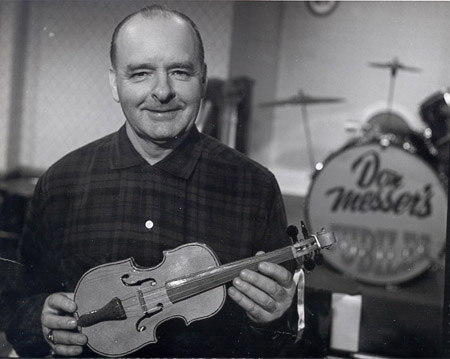
Don Messer was born May 9th, 1909 in Tweedside, New Brunswick, just outside of Harvey. As a young child he discovered his love for the fiddle and Scottish music. Don learned how to play the fiddle when he was five. As he got older he would play shows in the local area and later throughout southwestern New Brunswick. At the age of 16, Don moved to Boston where he lived with his aunt for three years. While there he received his only formal training in music.
When Don return to the Maritimes in 1929, he began his radio career on CFBO in Saint John, New Brunswick when he joined the station staff. Don began putting together a small studio band of musicians and in 1934 they began a regular radio show for CBC on CHSJ under the name “New Brunswick Lumberjacks”. Don began making special appearances throughout the Maritimes and New England under the name “Backwoods Breakdown”.
In 1939, Don moved to Charlottetown, PEI and started working at CFCY as a music director. He formed the "Islanders" and by 1944 the group was airing a show nationally on CBC radio. The show established itself as the most popular Canadian radio show during the 1940s - 1960s and "Don Messer and His Islanders" began to tour outside of the Maritimes. “Don Messer and His Islanders” radio show ended in 1956. CBC television began airing a summer series called “The Don Messer Show” on August 7th, 1956. The show continued through the fall as “Don Messer’s Jubilee” which carried on throughout the 1960s. In 1969, “Don Messer’s Jubilee” was cancelled with much protest.
On March 26th, 1973, Don Messer died in Halifax, Nova Scotia. A monument was erected in his memory in Tweedside. A fiddle also stands in Harvey as a monument to Don Messer.
Inez Davis
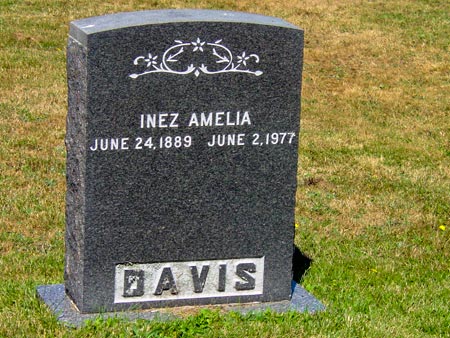
During the 1920s, Inez Davis taught fourteen year old, King Ananda of Thailand who lived for two years in the United States with his father who was studying medicine at Harvard. At this time Ananda learned his ABC’s from Miss. Inez Davis of Harvey, New Brunswick. She had first heard about the job while working with the late Presidents Woodrow Wilson’s daughter, Jesse and her husband, Professor Sayre. Professor Sayre worked at Harvard and asked Miss. Davis if she would mind working with royalty. She taught him for two years until he was old enough to go to school and then she returned home to Harvey only to continue teaching.
Wendy Nielsen
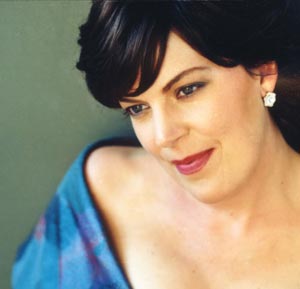
Wendy Nielsen was born and raised in Harvey, New Brunswick and is a graduate of Harvey High School. She has become one of Canada’s great sopranos. She is highly acclaimed for her appearance in the opera, concerts, and recital platforms. She has sung major roles at the Metropolitan Opera in New York in addition to other engagements across North America and Europe, including her recent debuts at Carnegie Hall and with the New York Philharmonic. Critics love her extraordinarily rich, vibrant voice and she receives rave reviews for her winning style. Wendy memorizes audiences with her appealing voice and her charming presence. Wendy now lives in Cambridge Narrows, NB with her husband and son. She is also a vocal instructor and is totally committed to helping young Canadian singers.
Sarah Emma Edmundson
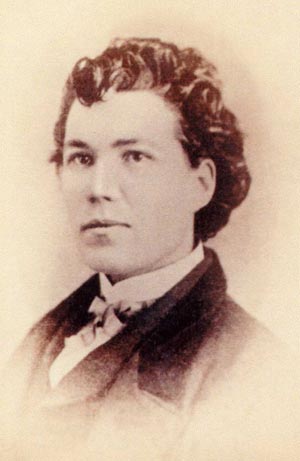
Sarah Emma Edmundson was born in Magaguadavic in December of 1841. She left home after her abusive father, Isaac tried to force her to marry a man again her will. Her father had wanted a boy, but ended up with four daughters. Sarah and her sister had grown up wearing pants and doing “man chores”. When she ran away from home she disguised herself as a man named Franklin Thompson and worked for quite a while selling books in St. John. However, she was always afraid that her father would catch her, so she fled to the United States and joined the Civil Army. She worked as a female nurse and somehow managed to survive all the disease and death while under fire in the hospital tent.
During the Battle of Bull Run she had an encounter with former admirer, John Vance of St. John. Later she heard of his murder, and vowed to avenge the death of her friend. She set out on what would be her most dangerous mission ever; that of a secret agent. Some of her disguises included a Negro, an Irish peddler named Bridget O’Shea, a rebel cavalryman, and a clerk. In 1865, she wrote a book entitled, "Nurse and Spy in the Union Army". The book can be found in the rare book section of the archives in the Harriet Irving Library on the U.N.B. Campus.
Edmondson's career as Frank Thompson came to an end when she contracted malaria. Unable to go to the military hospital because she would be revealed as a woman, she left the army and checked herself in to a private hospital, intending to return to military life once she had recuperated. Once she was better, however, she saw posters looking for Frank Thompson as a deserter. Rather than return to the army as a woman, she decided to serve as a female nurse at a Washington, D.C. hospital for wounded soldiers run by the United States Christian Commission.
Sarah met her future husband, Linus Seelye of Saint John, near the end of her career. They were married in 1868 and had three children. She was the first woman in the Civil War to receive a pension. On September 5th, 1898, Sara Emma Evelyn Edmondson Seeyle died and was buried with full Military Honours in the Grand Army Section of the Washington Cemetery in Houston, Texas. On March 19th, 1990, she was inducted into the New Brunswick Women's Hall of Fame.
The PBS television network ran a program called "Canadians in the Civil war" that told Edmundson's story. In Canada, a documentary of Edmondsons' life was produced in 2004 entitled, “The Unsexing of Emma Edmondson”.
